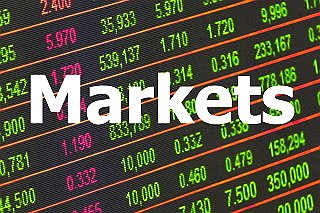Market Commentary February 2

The market starts February with the up and down day as a hustling week, of economic data and corporate earnings came to a close. The monthly non-farm jobs report was pretty sound, led by non-farm payroll increased by 304K jobs in January - well ahead of the 170,000 anticipated.
While there was an important revision down of last year's December jobs gains, all in all, it was a good report. The monthly unemployment rate did tick up insignificantly to 4 percent. Hourly earnings median increased only 0.1 percent - below the 0.3 percent anticipated.
On the US-China trade discussion front, President Trump said he would meet President Xi Jinping very soon to attempt to conclude a comprehensive trade deal. This meeting of the two leaders is destined to take place during Trump’s proposed visit to Asia region for meeting with N.K. leader, Kim Jong-un.
The market finished strong for US Treasury’s and crude oil, while stocks were moderately positive. The Nasdaq 100 was down about 32 points or 0.25 percent, the S&P500 nominally up less than 3 points or 0.09 percent, the DJI closed up 64 points or 0.26 percent, and the small-cap Russell 2000 end up with plus around 3 points or 0.18 percent on the day.
Other Market(s)
The stock market(s) globally delivered well on Friday trading session, and China market was no different, with President Trump declaring “substantial progress” was being offered with the American delegation meeting with China's counterparts.
Trump's remarks were “This is either going to be a huge deal, or it is going to be a deal that we will just postpone for a little while.” Both scenarios appeared to buoy the Chinese markets with the core Shanghai index increasing 1.3 percent.
The Japan Nikkei 225 index increased 14.90 (0.07%) to close at 20,789, The H.K. Hang Seng and South Korea's Kospi indices were amongst the losers - posting a small loss. The Kospi index is now up 9.57 percent Year-To-Date, with the Won currency was slightly down Year-To-Date, an outstanding performer - after enduring a hot 2018 year.
The U.K. FTSE100 and French CAC40 were the star players of the eurozone market, rising 77 and 55 respectively. The German DAX30 did not fare as well as raising marginal.
The FTSE’s index Year-To-Date figure is now 4.34 percent, a much lesser value than that of its Eurozone counterparts CAC40 with 6.10 percent and DAX30 with 5.89 percent.
Though, from an international viewpoint and taking respective currencies into account, the FTSE100 is performing much better as the British Pound rose 2.78 percent Year-To-Date and the Euro Dollar declined minus 0.16 percent.
As further economic numbers are released from Europe, most Eurozone manufacturing numbers were lower than expected. The only economy to post an increase in the Purchasing Managers' Index number was Spain, beating estimates using a contraction under the assumption.
Euro Dollar recovered from Thursday's slide, rising 86 pips versus the US Dollar. British Sterling was negative with 29 pips; however, it has done pretty well Year-To-Date. Gold continuously gains terrain on dovish Federal Reserve policy confirmation, but on Friday slipped minus $4.
Glancing at the chart below it is obvious that the constant rise of Gold merely is marking time until it decisively market bursts through Mean Res at $1321 and taking out a season-high of $1226.
Trading Signals On Demand And What Should You Know!